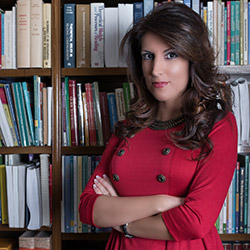Lessons learned: CLIL and paths forward in bilingual education

Europe has sought to raise its citizens’ linguistic competence levels, push for the mastery of two languages in addition to their mother tongue and safeguard and support plurilingual and intercultural education. Exactly 30 years ago, a brand-new acronym entered the language-teaching lexicon and promised to act as a powerful lever for change and success on all these fronts: CLIL.
CLIL, considered the European approach to bilingual education (although it is now also increasingly being used in Asia and Latin America), entails teaching a subject matter (e.g. science, mathematics, or physical education) via the target language. This is expected to maximise meaningful, unconscious and increased exposure to the language. Language lessons are timetabled alongside content teaching, enabling CLIL programmes to also incorporate formal language learning.
CLIL initially offered such shiny promises that it was enthusiastically embraced and viewed almost exclusively in a positive light. However, the inevitable barriers inherent in its application have subsequently caused a severe backlash: deficient supply and training of teachers, lack of familiarity with the student-centred methodologies that are part and parcel of CLIL, shortage of materials, insufficient measures to cater to the needs of diverse learners, and inadequate integration of language and content in teaching and evaluation. This has led detractors (in a violent swing of the metaphorical CLIL pendulum) to be very vocal about the negative aspects of CLIL.
After three decades of sustained implementation of and research on this approach, we fortunately now have a solid evidence base, a trustworthy track record of how – and if – CLIL is working.
So… is CLIL worth the hype? The empirically robust body of research we now possess has spoken loud and clear: yes, it is. Why? Because…
- It significantly improves the target-language level of students without being detrimental to their mother tongue or watering down content learning (especially in the long run).
- It has numerous cognitive advantages over monolingual learning; CLIL students show greater problem-solving skills, are better at multi-tasking, are less distracted by irrelevant information and are more precise in their decision-making.
- It also develops soft skills and key competences (critical thinking, risk-taking, interpersonal abilities and intercultural competence), increasing students’ employability and better preparing them to meet societal demands.
- It increases motivation; it favours active learning methodologies, in which students take centre stage and teacher-fronted methods find less traction.
- It increases exposure to the language both inside and outside the classroom (something particularly relevant in countries with firmly entrenched monolingual traditions).
- It has the potential to work even in the most disenfranchised settings and acts as a leveller, cancelling out differences in setting and context to make bilingual education more accessible to all.
CLIL thus seems to be a win-win prospect in language teaching and learning. However, is everything peachy in its current and future implementation? No, it’s not. Research has also enabled us to identify the areas that need to be addressed if we seek to keep the metaphorical CLIL train on track.
We still need to identify the key traits that characterise successful CLIL practice to ensure that we are properly implementing this approach. The full-fledged integration of language and content through pluriliteracies requires further attention, as do measures to guarantee that over- and under-achievers alike can benefit from bilingual education. Broadening the scope to favour a supranational and transcontinental perspective is also on the CLIL to-do list in order to learn from others’ best practices. Equally, teacher development must figure prominently in the CLIL process to guarantee a well-prepared supply of multilingual staff trained to teach in CLIL settings.
All of these actions will require a concerted effort from all frontline stakeholders. Grassroots practitioners’ concerns should be addressed by researchers, researchers’ outcomes should go from the lab to the public, and gatekeepers should ensure that research-based evidence (not merely opinions or beliefs) informs political decisions.
A harmonised, symbiotic top-down and bottom-up push should shape the future of CLIL. If it’s worth the hype, it’s worth the effort, because much is at stake for Europe (and beyond): the adequate preparation of a plurilingual workforce ready to conquer the challenges our continent will inevitably face and to help it advance, unfettered, towards a thriving linguistic and intercultural future.
Additional information
-
Education type:School Education
-
Target audience:TeacherStudent TeacherHead Teacher / PrincipalPedagogical AdviserSchool PsychologistTeacher EducatorResearcher
-
Target audience ISCED:Primary education (ISCED 1)Lower secondary education (ISCED 2)Upper secondary education (ISCED 3)

